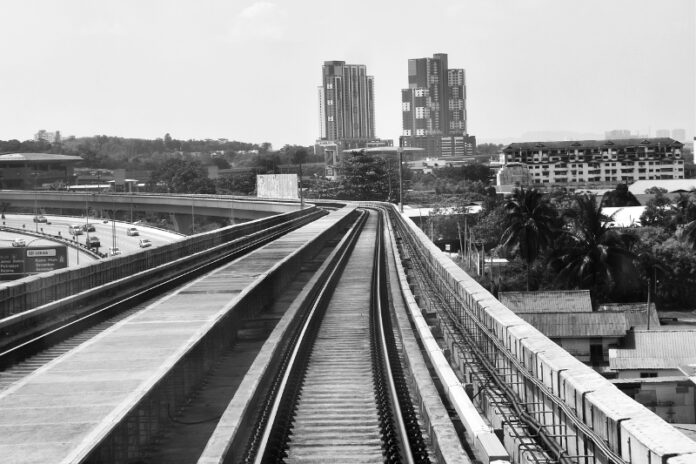As 2022 gets busy, what are your top three priorities for the year?
Our cybersecurity transformation roadmap has been revised. The pandemic has delayed some initiatives related to the roadmap, and at the same time introduced new perspectives that needed higher priority. The evolving threat landscape and the growing adoption of concepts such as zero-trust architecture are among the reasons for doing so.
There is also a more urgent demand from the new CEO to focus more on company-wide digital workplace innovation solutions. Previously, we have been deploying use cases based on Google Workspace collaboration capabilities, but most of them are department based. The new focus will be to look at across-the-board solutions that can bring about a bigger impact to the organisation as a whole.
The cyberthreats to operational technology (OT) systems – including public transportation – is increasing, so the plan is to work with the internal and external stakeholders in addressing cybersecurity for the MRT operations. As we are embarking on our third MRT line this year, we are looking into improving the secure-by-design approach into the overall construction project execution, as well as looking at how best to secure the existing rail operations.
What were some of the biggest lessons of 2021? Have we learned these lessons, and is the world ready for another pandemic?
Business units and stakeholders are more open to embrace digital technologies despite them being widely available even before COVID. Remote working, cloud systems, online meetings, as well as collaboration and workflow systems are among the things that will continue to prevail even after the pandemic.
However, main concerns are always on cybersecurity, and the threat landscape is evolving rapidly, along with digital transformation. The sophistication of the attacks – not just technical but also through social engineering methods – are real warnings of things to come, pandemic or not. But experience has taught us and the world is certainly more prepared than it was prior to the COVID-19 pandemic.

What do you see as being the most impactful technologies coming into play over the next year? What are your broad technology predictions for 2022?
In general, the metaverse is relatively new unexplored territory but with real economic impact that will only grow over time as more and more organisations are venturing into it. As for the real physical world, adoption of virtual and augmented reality, 3D printing, and modular and prefabricated components are among the technologies that can impact the construction industry.
In general, adoption of big data together with AI/ML in more use cases will continue to pick up, enabled by the more economical availability of cloud computing. This can result in more personalised services, while improving efficiency of various economic activities around us. The growing demand and adoption of ESG (environmental, social, and governance criteria) in government and private organisations will also drive the growth of various green technologies towards environmental sustainability, along with the digital technologies needed to make them happen.
How has your workplace transformed over 2021, and what are your precise workplace transformation strategies for 2022?
The concept of work-from-anywhere has really picked up, despite their shortcomings and the challenges to get them as effective as physical interactions. However, some of the readily available capabilities have picked up traction among our users, offering some complementary capabilities when users collaborate among themselves.
As restrictions are being eased and countries are shifting towards the endemic phase, mobile and cloud technologies have remained – in most cases – essential in providing enterprises with much needed agility to stay competitive or relevant in the years to come.
As for my organisation, we are looking into streamlined digital workflow systems to improve business process efficiency, whether we are working in a pandemic scenario or not. At the same time, beefing up the organisation’s cybersecurity maturity (people, process, and technology) continues to be important because the conversation nowadays is about taking on the “assume breached” mindset, and the theme should be moving towards cyber resilience instead of just security.
Could you talk about the IT infrastructure that supports the operation and management of MRT Corp?
As a project owner and developer like us, the railway operations itself are actually under another state-owned entity. So our nature is more of construction instead of public transportation. In this case, we are reliant on SaaS (software as a service) offerings for collaboration tools, document management, and financial management.
The physical infra is more of a typical enterprise or corporate office set up, and is mainly to facilitate the need for secure and high availability of the infra for our users. We deployed virtualisation using HCI (hyper-converged infrastructure) for our on-premises servers and SD-WAN to connect our site offices.
How will your vertical be impacted by the pandemic and the post-pandemic reality? What will the “new normal” look like for your industry?
The core of our business can be described as literally brick and mortar. Nothing can substitute the need to be physically present at the worksites whether during construction or after completion when we move to an operational state. What has changed are the collaboration practices where some have embraced more mature technologies to facilitate activities such as approval workflow, document management, design collaboration, prototyping, 3D modelling, visualisation, and clash management.
Once operational, the systems are kept in closed or isolated networks. So, the monitoring and management of the operation systems are also done on-site, in the physical operating control centres. External internet connections for these systems are not allowed at all unless absolutely necessary, such as to facilitate ticket payment transactions. With the growing concerns in OT security, it is likely that the trend will stay that way in the rail industry.
















